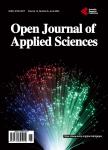Bacterial Community Diversity of a Congolese Traditional Fermented Food, “Pandé”, Revealed by Illumina Miseq<sup>TM</sup> Sequencing of 16S rRNA Gene
Bacterial Community Diversity of a Congolese Traditional Fermented Food, “Pandé”, Revealed by Illumina Miseq<sup>TM</sup> Sequencing of 16S rRNA Gene作者机构:Institut national de Recherche en Sciences Exactes et Naturelles Brazzaville Congo Faculté des Sciences et Techniques Brazzaville Congo Ecole Nationale Supérieure d’Agronomie et de Foresterie Brazzaville Congo Faculté des Sciences de la Santé Brazzaville Congo
出 版 物:《Open Journal of Applied Sciences》 (应用科学(英文))
年 卷 期:2022年第12卷第3期
页 面:387-405页
主 题:Diversity Pandé Bacterial Community Fermented Food Raffia Palm
摘 要:Pandé is a Congolese fermented food produced from fruit pulps of raffia palm. The aim of this study was to explore the diversities in bacterial communities in the unfermented pulps (control) (PNFL) and fermented pulps obtained from fruits using boiling (PMF) and purchased at markets in Brazzaville (PFL) and using Illumina MiSeqTM sequencing of 16S rRNA gene. A total number of 157,054 sequences was obtained and grouped into 737 operational taxonomic units (OTUs). These were classified into 13 phyla, 26 classes, 48 orders, 96 families and 176 genera. At the phylum level, the most frequent bacterial communities were: for PFM, Proteobacteria (38.94%) and Firmicutes (19.37%);for PFL, Firmicutes (69.10%) and Proteobacteria (30.89%);for PNFL, Firmicutes (84.92%) and Proteobacteria (14.22%). were the most frequent in PFL, while Acidobacteria (40.02%), Proteobacteria (38.94%) and Firmicutes (19.37%) were preponderant in PFM. Firmicutes (84.92%) and Proteobacteria (14.22%) were the most common in unfermented pulps (PNFL). Lactobacillus (47.70%) and Gluconobacter genera (15.33%) were the most represented in the PFL sample. Acidipila (35.56%) and Rhizomicrobium (11.41%) were preponderant genera in the PFM sample. Weissella genus was the most frequent in the PNFL sample. Hierarchical cluster indicated that the samples could be grouped into two groups of different origins. PCA showed that main genera were higher in the fermented samples. The diversity was higher in the fermented pulps or Pandé than in the unfermented pulps. Pandé can be a potential source for the isolation of bacteria with biotechnological potential.



